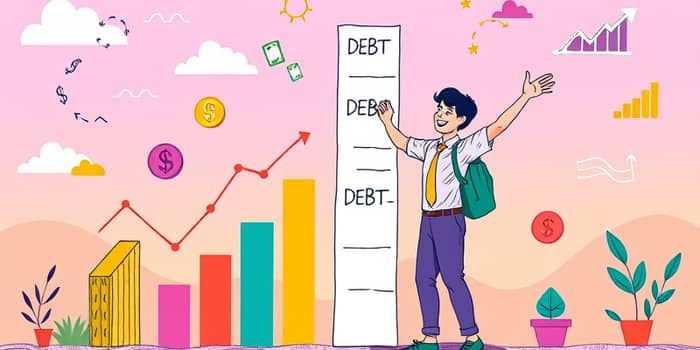
Tracking your debt payoff can be both liberating and overwhelming. While having clarity on what you owe is essential, constantly checking every cent can lead to anxiety and burnout. This article will guide you through setting up a sustainable system to monitor balances, celebrate progress, and maintain peace of mind.
By learning how to track effectively, you can stay motivated on your debt-free journey without letting numbers dominate your daily thoughts. You will discover practical tools, proven strategies, and psychological tips to keep debt management productive and positive.
Keeping tabs on debts is not just about numbers; it is about purpose and progress. When you document each account’s balance, interest rate, and payment due dates, you transform vague worries into actionable steps. A clear view of your obligations allows you to allocate resources wisely and adjust priorities when life shifts.
Core data to track include account names, balances remaining, interest rates, minimum payments, and due dates. Having these details at hand prevents late fees and enables strategic choices like applying extra funds where they matter most. In this way, small actions add up to substantial change over time.
Without a structured approach, it’s easy to feel you are running in place. By monitoring trends instead of every transaction, you can focus on growth rather than getting stuck in daily fluctuations. A consistent review schedule nurtures confidence and a genuine sense of control.
Select a system you enjoy and can sustain. If entering numbers into a screen feels tedious, channel your creativity into a craft-based tracker. If you love automation and data, digital solutions can handle calculations on your behalf. The goal is to spend minimal time on updates and maximum time on action.
Compare each option by its ease of use, motivational potential, and maintenance demands. A heavy-duty spreadsheet might work for a data enthusiast, while a wall calendar adorned with stickers could be perfect for someone who craves visual rewards.
Once you have chosen your method, set limits to prevent over-monitoring. Decide on review intervals that align with your lifestyle and stress tolerance. Too frequent check-ins can lead to obsessive behaviors, while too infrequent reviews might allow surprises to slip through.
Schedule limit review frequency to monthly checkpoints and perhaps one quarterly deep dive. During monthly sessions, update balances, note any changes, and adjust your plan. During quarterly sessions, examine overarching trends in net worth and interest savings.
Automate as much as possible. Link bank payments to your digital tool, or establish recurring manual reminders in your calendar app. The less manual entry required, the less likely you are to fall into the trap of micromanaging every number.
Tracking pairs naturally with either the debt snowball or the debt avalanche method. The snowball approach focuses on the smallest balances first, delivering quick wins and a sense of momentum. The avalanche strategy targets high-interest debts to minimize the total cost of borrowing. Both benefit from clear progress visuals.
Attach your tracking tool to your preferred strategy:
By aligning your visual system with your repayment philosophy, you can combine financial efficiency with psychological motivation and celebrate each milestone to boost morale.
Debt repayment is a marathon, not a sprint. Tracking progress should feel encouraging, not burdensome. Incorporate small rewards when you knock out a single debt or reach a percentage threshold like 25% or 50% paid off. These celebrations reinforce good habits and reduce stress.
Recognize that hiccups will occur—unexpected expenses or slower income months can slow your pace. Instead of dwelling on setbacks, use your next scheduled review to reframe the plan, staying positive about the journey ahead. This helps you avoid analysis paralysis and undue stress.
Involve family members or an accountability partner if that helps maintain perspective. Weigh the emotional benefits of shared progress against the potential anxiety of over-communication. Choose the level of collaboration that makes tracking feel supportive, not invasive.
Your tracking system should evolve as you progress. Early in the journey, weekly or biweekly updates might feel helpful. As you gain confidence, scaling back to monthly or quarterly check-ins can release mental bandwidth for other goals. The key is to adapt to your changing needs.
Remain mindful of the future benefits of a debt-free life: improved credit scores, lower monthly expenses, and greater freedom to pursue dreams. By setting aside daily number crunching and focus on long-term progress, not details, you free yourself to enjoy the present while building a solid financial foundation.
• Clarify your obligations by tracking core debt details: balances, rates, and due dates.
• Choose a method that sparks joy and is easy to maintain.
• Set deliberate review intervals, automate updates, and step back from daily micromanagement.
• Combine tracking with a repayment strategy and celebrate your victories along the way.
With the right blend of structure and flexibility, you can master your debt without making it the center of your universe. Implement these insights to transform your repayment journey into a positive, empowering experience.
The path to freedom lies less in obsessing over every cent and more in building sustainable habits that yield lifelong results.
References













